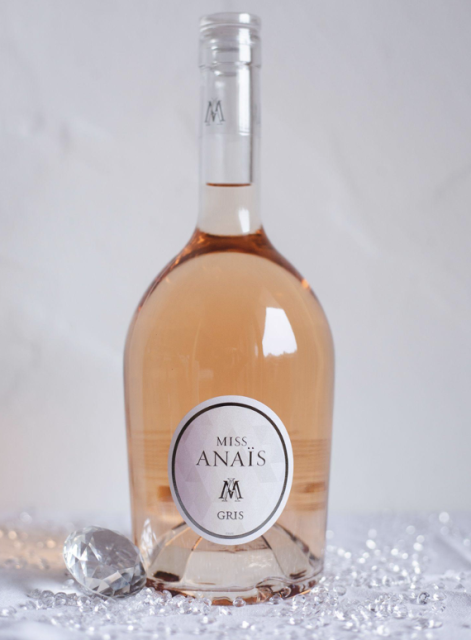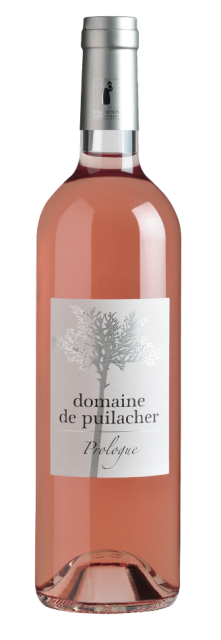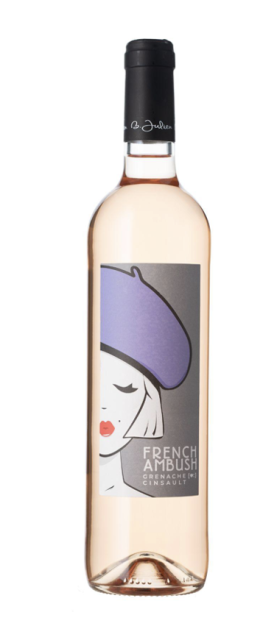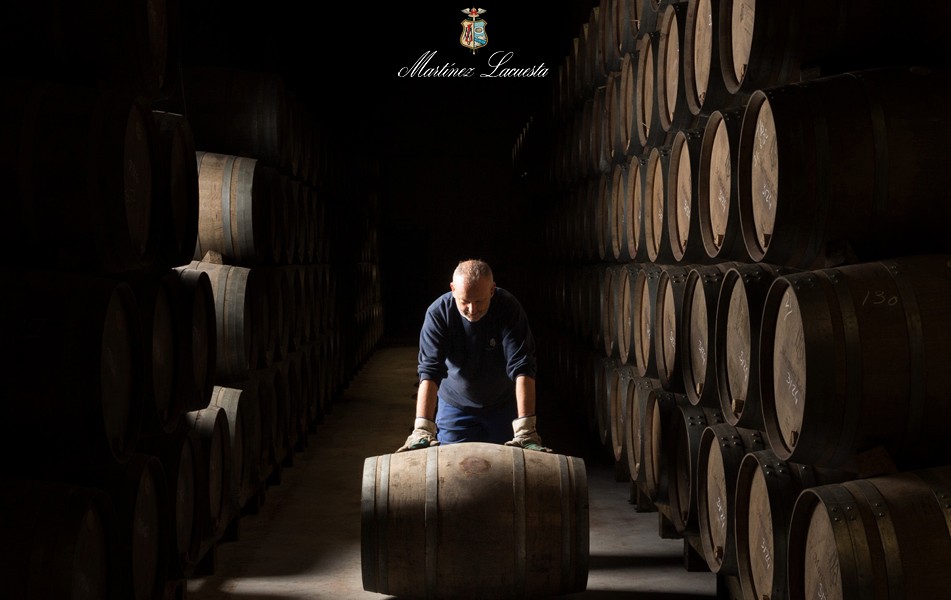Nine fine rosés from the Pays d’Oc IGP
Having tasted through almost 100 samples of pink wine from the Pays d’Oc IGP, Patrick Schmitt MW made the following selection, which were presented to the trade on 14 June.

The rosés take in a range of price points, and feature a wide selection of grape varieties, from Grenache Gris to Pinot Noir, along with Caladoc, which is a crossing of Grenache and Malbec that’s found in the Pays d’Oc IGP.
Stretching along the Mediterranean coast to the height of the Pyrenees, the Pays d’Oc IGP is a part of the largest winemaking area in the world and produces more rosé than Provence.
You can find out more about the area by clicking here, and scroll down for my nine-strong selection for last month’s masterclass in London.
French Ambush, Grenache/Cinsault, 2021
- ABV: 13%
- Grape variety: 84% Cinsault, 16% Grenache
- Price: £12.49
- R/S: Less than 1g/l
- Producer: Domaines Julien & Fils
- Notes: The Julien family have been winegrowers for five generations in the heart of the Languedoc-Roussillon. The family has been cultivating their estate for more than 30 years – a clay-limestone and pebble vineyard situated on Quaternary terraces on the foothills around Béziers, parallel to the Mediterranean coast.
This fun-looking bottle contains some fairly serious rosé, with inviting ripe strawberry flavours, a touch of peach and pear, and a fresh, dry finish, with a lingering note of pink grapefruit.
Chantovent, Miss Anaïs Gris, NV

- ABV: 12.5%
- Grape variety: Grenache Gris
- Price: €4,95 retail price in France (seeking UK distribution)
- R/S: 1.5g/l
- Producer: Chantovent, which is part of the Jean d’Alibert group: 1,200 winegrowers with 6,000 hectares of vines in the Languedoc.
This very pale rosé, or gris, is an exciting find in a world where pink wines from the Med are commonly made with Grenache Noir. That’s because it’s been produced entirely with the pink-skinned Grenache Gris, a rare grape (with fewer than 3000ha planted globally) that brings a lovely combination of ripe yellow stone fruit and a full texture to wines, but also a fresh acidity – generally higher than the darker-skinned Grenache Noir. As a result, Anaïs is a soft, gently oily wine, with plenty of peach and pear flavours, and then a zesty, palate-cleasning fresh finish.
Domaine de L’Ostal, L’Ostal Rosé, 2021

- ABV: 13%
- Grape variety: 50% Grenache, 50% Syrah
- Price: £13.50
- R/S: 0.4g/l
- From: Located in the foothills of the Montagne Noire, half-way between the mediaeval town of Carcassonne and the old Roman port in Narbonne, the Domaine de L’Ostal stretches across 150 hectares of land including 60 ha of vines and 25 ha of olive groves.
- Producer: Domaines Jean Michel Cazes, who bought Ostal in 2002.
This pretty pale salmon pink from Domaines Jean Michel Cazes – the owner of Château Lynch-Bages in Pauillac – will appeal to lovers of delicate dry rosés, with its light feel and fresh finish, along with zesty fruit characters, from grapefruit to bitter lemon, along with a touch of pear and cherry, giving a little weight to the mid-palate.
Domaine de Puilacher, Prologue, 2021

- ABV: 13%
- Grape variety: Syrah
- Price: €7 retail price in France (seeking UK distribution)
- R/S: Less than 1g/l
- From: Domaine de Puilacher takes its name from a tiny village perched on a hillock in the foothills of the Hérault valley
- Producer: The Fages family, with vineyards in the area since the sixteenth century
This pale, pure Syrah rosé has plenty of personality, with layers of flavour from pink grapefruit to white cherry, a hint of dried herbs and cracked pepper, along with a long, dry, chalky finish, ensuring that it’s a wonderfully refreshing drop.
Domaine Ancely, La Colère Belle, 2021

Partner Content
- ABV: 13.5%
- Grape variety: Pinot Noir
- Price: €7 retail price in France (seeking UK distribution)
- R/S: 0.2g/l
- From: The Domaine Ancely is situated on south facing slopes in the foothills of the Montagne Noire.
- Producer: Domaine Ancely is a second generation family estate, run today by Bernard and Natalie Ancely. When the couple took over the family estate in 2001, they decided to stop supplying the local co-operative with grapes and make wine for themselves.
With its red-berry fruit flavours, and soft texture, Pinot Noir makes lovely rosé, and this is a first-rate example from warm Mediterranean climes. There’s plenty of freshly-crushed strawberry, a touch of peach, and a persistent, zesty, gently chalky bone dry finish, making this a fruity but fresh style of pink wine that should provide a point of interest for Pinot lovers.
Domaine de Cibadiès (Domaines Bonfils), Syrah / Grenache Rosé, 2021

- ABV: 12.5%
- Grape variety: 70% Syrah, 30% Grenache
- Price: £14
- R/S: Less than 1g/l
- From: The 95 hectares of Domaine de Cibadiès is situated at Capestang between the Canal du Midi and the Oppidum of Ensérune
- Producer: Les Domaines Bonfils, which is run by Laurent Bonfils, who manages 17 family properties throughout the Languedoc-Roussillon.
This super fresh, bone-dry rosé has a touch of white-fleshed peach, pomegranate and pink grapefruit flavours, with a hint of leafiness, and a long, bright, slightly chalky finish. It’s certainly a refreshing style of pink wine, dominated by Syrah, from this fine estate, where Chardonnay is the specialism.
La Belle Pierre, Evidence, 2021

- ABV: 12.5%
- Grape variety: Caladoc and Cabernet Franc
- Price: €4,70 retail price in France (seeking UK distribution)
- R/S: Less than 2g/l
- From: Vineyards located between Provence and Languedoc
- Producer: La Belle Pierre Cave Cooperative
- Caladoc is a dark skinned grape variety, first produced in 1958 when ampelographer Paul Truel crossed Malbec with Grenache. The crossing was made to create a grape with less susceptibility to coulure (or poor fruit set).
A novel blend of Caladoc – a specialism of the Languedoc – and Cabernet Franc, this is an unusual find among southern French rosés, which tend to feature Grenache, Syrah, Mourvèdre and Cinsault, among other grapes. The result is a wine with plenty of cherry and strawberry fruit flavours, along with a touch of nettle, and a lime and grapefruit finish, providing a zesty edge to this dry rosé.
Domaine La Jeanne, Excellence Rosé, 2021

- ABV: 12.5%
- Grape variety: 50% Grenache, 50% Cinsault
- Price: €10 retail price in France (seeking UK distribution)
- R/S: Less than 1g/l
- From: In Boujan Sur Libron in the Hérault, 27ha of vines on the hillsides of Libron, between the vineyards of Saint-Chinian, Faugères and the Mediterranean sea.
- Producer: Domaine La Jeanne
- Notes: now in organic conversion for 3 years until 2023
Housed in a distinctive frosted bottle, this fine pink wine from organically-managed vineyards has plenty of ripe fleshy fruit, from peach to pear, and a touch of white cherry, along with a bright acidity, making for a versatile style of dry rosé that would pair well with light dishes or serve as a refreshing aperitif.
Domaine Les Yeuses, Ô d’Yeuses Rosé, 2021

- ABV: 13%
- Grape variety: 60% Syrah, 30% Grenache, 10% Cinsault
- Price: £14.95
- R/S: 0.9g/l
- From: 80 hectares, this domaine has been owned by the Dardé family for the last 30 years. Located in Mèze, between the Mediterranean garrigue and the Etang de Thau, the vineyard is on a clay and chalk soil which tends to be sandy half way through the slopes.
- Producer: Domaine Les Yeuses
A delicious, pale salmon pink wine made using the classic grapes of southern France, the Ô d’Yeuses Rosé has depth, complexity, and plenty of freshness. There’s a slightly creamy edge to the wine, bringing some weight to the texture, which also features flavours peach and pear fruit, a touch of red berry, and then a crisp apple note to make your mouth water. Certainly one of the stars of the Pays d’Oc rosé scene right now.
Read more
Why the Pays d’Oc IGP is ripe for rosé
Related news
Zuccardi Valle de Uco: textured, unique and revolutionary wines
Non-vintage is ‘putting together a puzzle’ says Champagne Lallier





